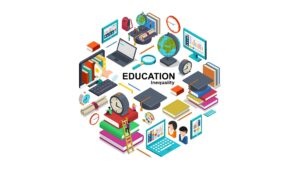Educational inequality may seem complex; we all witness it in our daily lives. Basically, it’s about how some kids have greater access to resources, decent schools, and qualified teachers than others, often just as a result of their families’ money or the neighborhoods in which they reside.
This gap in educational chances isn’t just a coincidence; socioeconomic factors like family income, housing availability, and neighborhood quality are all closely related to it.
Several reasons lead to this in a group of people, however, socioeconomic stratification is one of the major reasons.
Nonetheless, consider a pair of students. One has parents who can afford the highest standard of education, up-to-date technology, a peaceful study space at home, and private teaching. The other student may attend a school with more expensive textbooks, fewer resources, and larger class sizes if their family is having financial difficulties.
Things won’t be easier for the one with fewer resources and the suffering might result in personality issues, complexes, or even no access to higher education.
The Foundations of Educational Inequality

The economic and social resources available to a child’s family and society impact educational inequality from the moment of birth, not just in high school or even elementary school. Children’s trajectories are frequently determined long before they enter the school by foundational socioeconomic factors.
Almost every aspect of a child’s educational experience is impacted socioeconomically. Higher-income families frequently have access to educational resources like high-quality childcare, development programs, and even time for learning-focused activities at home that are unavailable to those with lower means. In socioeconomic stratification, Children in financially secure homes, for instance, may have access to literature, educational resources, and peaceful areas that nurture concentration and development, whereas children in lower-income families may not have these resources because of financial limitations.
The differences start at a young age. Preschools, kindergartens, and other early childhood education programs are frequently not equally accessible. Early education is vital for building the basis for literacy, proficiency, and social skills that are required for future success. Affordable preschool options are scarce or overcrowded in many low-income communities, creating a gap in early learning that may have an impact on a child’s academic success throughout their schooling.
Furthermore, there is an impact of socioeconomic class. A child’s educational career is also greatly influenced by parental support and community involvement. As per socioeconomic stratification, Parents might have more time, money, and flexibility to participate fully in school functions, homework assistance, or PTA meetings in neighborhoods with greater income levels.
These exchanges benefit the child’s education as well as the educational system. On the other hand, parents who have several jobs or are under financial strain might not have the time or energy to participate in their child’s school, which makes it difficult to provide support at home.
Socioeconomic class: Systems of Support in Families and Communities

A child’s surroundings, such as their family and neighborhood, have an impact on their education in addition to their school. In Educational Inequality, Children’s academic journeys are significantly shaped by their support networks outside of the classroom. In addition to influencing what children learn, the availability or lack of resources such as community programs, parental participation, and educational opportunities also affect how they perceive and approach their education.
Furthermore, in Education Inequality, Children’s academic aspirations and experiences are frequently shaped by the educational backgrounds of their parents. Higher educated parents are more likely to be equipped with the skills and resources necessary to support their kids through difficult coursework, assist with homework, and understand the requirements of various educational phases.
Along with investing in tutoring or extracurricular activities, they might also make reading and other educational pursuits a priority at home. However, socioeconomically, parents who have had limited access to school may find it difficult to support their child’s academic progress—not because they are not committed, but rather because they are unable to understand or offer the same degree of resources and advice.
In Education Inequality, another important issue that can affect how much support parents can offer is their availability of time. Parents in low-income families may work long hours or numerous jobs, which limits their time and energy for helping with homework, participating in school events, or participating in extracurricular activities.
Families that are more financially secure, on the other hand, frequently have the freedom to actively participate in their children’s education. By helping with homework, interacting with instructors, or joining parent-teacher organizations, this engagement builds a solid support system for kids and gives them constant encouragement and reinforcement throughout their education.
The Effects of Educational Inequality on Students over Time

Educational Inequality can have long-term effects that influence students’ prospects for the future and general well-being, not just while they are in school. Students frequently experience consequences that affect everything from career choices to mental health when they confront obstacles to receiving a high-quality education. One significant effect is on college access; learners from underfunded schools might not have the financial or academic resources needed to enroll in college. Lack of access to higher education may limit employment opportunities, limiting lifelong earning potential and financial security.
Furthermore, Education Inequality can have serious emotional and psychological consequences besides economic ones. Students who experience systemic barriers regularly may have low self-esteem or feelings of inadequacy, which can impact their motivation and capacity to achieve personal objectives. Students might find it more difficult to overcome the constraints placed on them by their circumstances as a result of these difficulties, which can create a vicious cycle of low expectations and lost confidence. Society can start to see how urgent it is to solve Educational Inequality by comprehending these long-term effects, which affect not only people but also entire communities and future generations.
Nonetheless, we can make significant progress in lowering Educational inequality and guaranteeing that every child has the chance to thrive by combining community-driven initiatives with policy reform.
Furthermore, facilitating students as much as possible by school, teachers or anyone associated can be miraculously helpful.













